Log In
View Upcoming Events
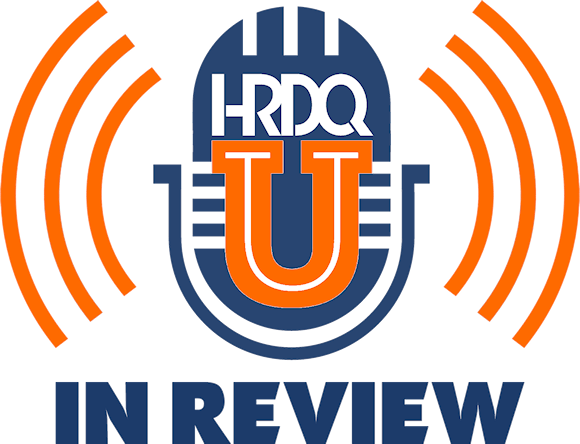
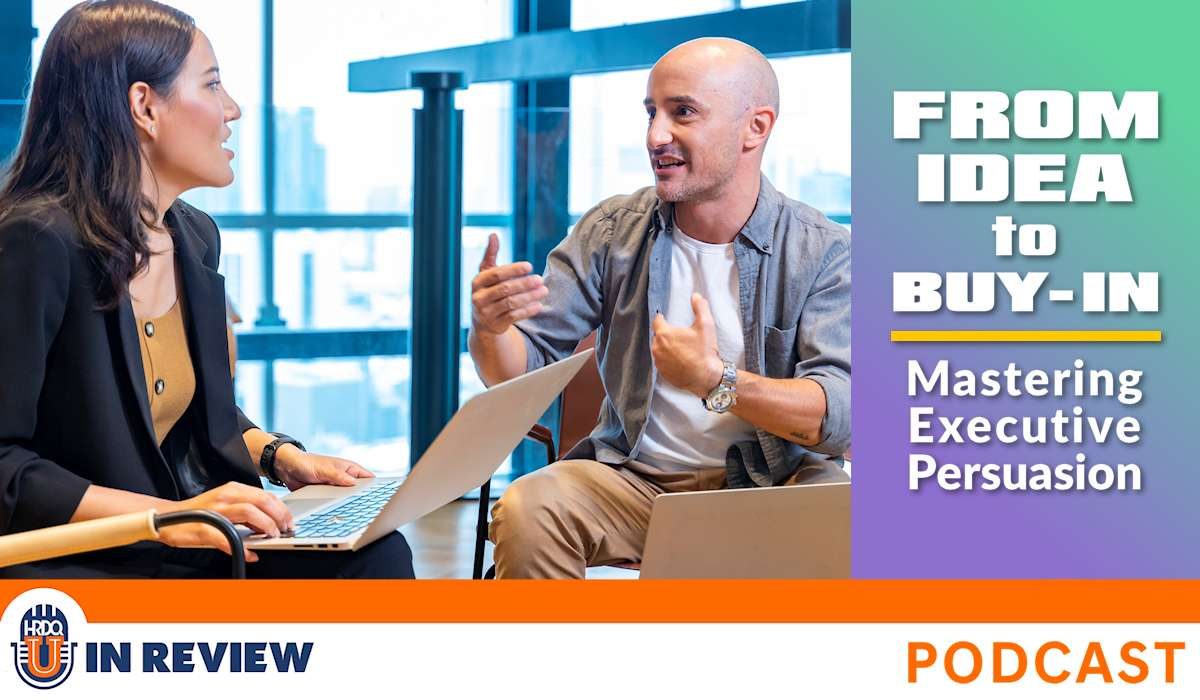
Sarah sits down with Chris Wong, a therapist and organizational consultant, to unpack his webinar From Idea to Buy-In: Mastering Executive Persuasion. Chris reveals how to navigate dysfunctional organizations and master the art of persuasion to get executive buy-in.
You’ll learn the WHAC method (What is it, How does it work, Are you sure it works, Can we do it) to craft persuasive pitches, plus strategies to win over data-driven execs with strong metrics and pilot programs. Chris also shares practical storytelling tips to make your message resonate – even if storytelling isn’t your strong suit – to achieve executive buy-in.
Wrap up with actionable steps to secure real executive buy-in – and don’t miss a special discount on Chris’s course for mastering difficult conversations.
Chapters:
Action Items:
00:01
Welcome to this week’s episode of the HRDQ-U In Review Podcast, where we bring you the latest insights and practical tools for enhancing soft skills training in your organization. This podcast is brought to you by HRDQU.com, and I am your host, Sarah, Learning Events Manager at HRDQ-U. Today we are joined by Chris Wong to discuss the webinar, From Idea to Buy-In: Mastering Executive Persuasion, hosted by HRDQ-U. And before we dive in here,
00:27
be sure to subscribe to our newsletter at HRDQU.com for exclusive updates, upcoming webinars and resources to help you and your team excel. Chris, welcome. Thanks for joining me today. Thanks. As always, Sarah, always happy to talk to you. And Chris, you have been on our podcast many times before, but can you introduce yourself for our new listeners? Share a little bit about your background. You how you got to where you’re at today.
00:55
Absolutely. I’m a licensed therapist by training and I still do it as a private practice. I worked as a director of leadership and organizational development, worked in L &D, and now I own my own company where I provide coaching and consulting and I work with leaders who have inherited dysfunctional organizations. I help them navigate all these difficult relationships and turbulent conversations they need to have.
01:18
And Chris, you recently presented this webinar with us, From Idea to Buy-In: Mastering Executive Persuasion. And I’d like to get into the key takeaways for registrants at this event. But before we do that, I do want to highlight one of our testimonials that we received from Barbara S. And Barbara said, as always, Chris shares practical, tried and true methods for building knowledge-based practices that can be used in many aspects of daily living. it was a great testimonial that came through. Yeah.
01:48
For those of you who were just tuning into this webinar for the first time and you’re a newcomer of HRDQU, make sure that you check out, go over to our page. We have a ton of webinars that we’ve worked with Chris before on where you can gather additional information as well. So Chris, can you talk about the key takeaways here for our registrants at our webinar event? Yeah, I think the biggest thing that we talked about was
02:16
Persuasion, the principles of persuasion are you can’t make people do something. You can’t make people do anything they don’t want to do already. It’s really about how do you get them to buy into your idea? How do you align your idea with their idea? And how do you understand who they are as a person so that you know what their motives are, what their wins are, what their success measures are, so that you can best work with them on that and align your win with their win. Then preparation.
02:46
We talked about the idea of how do you prepare? We use the, love using the WAC method, W-H-A-C. So Brad Pinvidic in his book, The Three Minute Rule, talks about it and introduces the idea of how do you lay out compelling and persuasive presentations? It just is talking about what is it? How does it work? Are you sure it’s going to work? can we do it? So overcoming those objections, but also getting right to the point of what is it and what’s going on because
03:16
You know, attention spans, as we talked about, aren’t getting shorter, but we are just so much faster at deciding whether we want to pay attention to something or not. So you have to hook them right away and just get straight to the point of this is what it’s about. This is why it’s going to work and this is why it’s important and let’s get into it. So we talked about that and then laying it out, doing all that. And then the importance of using storytelling to get people to buy in hitting people with that emotional tension.
03:43
that conflict so that they’re like, want to see how this resolves. And they’re bought in and being passionate, authentic about what you’re saying so that it comes through and so that people can believe it also. Because if you’re dull about it, if you’re just reading off slides, it’s not the reading off the slides that’s messing people up or takes them out of the presentation. It’s you’re just so flat and you’re not emotional about it. And there’s no way to connect with you or the information because you’re just so flat. So it’s being
04:11
authentically passionate about what you’re doing, about what you’re trying to get them to buy into. And could you share your tips and tricks on how someone can tailor their pitch when they know that they’re speaking to an executive team that only cares about numbers? Yeah, that’s where it’s more data is important. We talked about how you have to think about your audience. Are they more analytical? Are they more logical? And everybody makes decisions emotionally, which is why storytelling is important.
04:41
but they’re going to rationalize it afterwards in their head. And some people will rationalize it with numbers. And so you’re going to want to find data. Did you run a small pilot? Do you need to propose just a small pilot so that they can see that it works and they can buy in? It’s not a huge investment right away. Can you talk about what the cost is if you don’t implement this program or make this change? What the potential cost is going to be or even what the cost is currently by not doing this? You know, if there’s turnover already.
05:10
You probably have rough numbers around turnover costs or rehiring costs and all that stuff by not doing this implementation of this plan or this idea of yours. And even if you don’t have internal data, you have external data. There’s plenty of research out there in the world from everybody trying to just put in research or sell their product. There’s plenty of research talking about the cost of either turnover or not doing a certain thing or
05:39
the value of doing this, how much money people are saving or how much you’re saving in terms of labor costs. So it’s, you can bring that stuff in from lots of different places. And it’s important to think about, do you have an audience that cares about that? If they do bring it in so that you are prepared to talk about it. And this next question here is a two-parter for you first. So during the webinar, you talked about whack. One, can you explain and summarize what whack is to our listeners today so that they’re, they’re caught up to speed. And secondly,
06:09
How do you distill a complex idea into a whack style pitch without losing key info? Yeah. So as I explained earlier, it’s this basic idea of what is it, how does it work, are you sure it’s going to work, which is the evidence, and then the can you do it. So really overcoming, can I do it, are you sure that we can make this happen, some of those objections. I think of it as an extension of the golden circle, which Simon Sinek talks about in this Start With Why TED Talk.
06:40
And really, because he talks about how when you’re presenting information, way to get persuade people is talk about the why, which is the emotional part, and then the what and the how, which is covered in WH in this model. And then you’re just talking, going through objections and data at the end. It’s really helpful way to structure it because what you’re doing is you’re getting people to buy into the idea first. And then you’re, what you’re doing is bolstering your case after that with the, are you sure? Right? That’s the A.
07:08
That’s the evidence, that’s the data, that’s the research from internal or external sources, whatever may be. And then can you, or we do it, it’s overcoming some of those objections. What are some of the barriers that might exist to implementing it? And you’ve already thought it through, or you’ve already researched it, you’ve already talked to people about it. So you’re able to overcome those things and explain it right away and hit those objections before they come at you with them. So how do you outline it? And I talked about this in the…
07:36
webinar and I started doing it for the past year and I think it’s really helpful. Start with post-it notes. Take post-it notes and on each post-it note write one to three keywords of each idea that comes into your head about that topic. Put it all up on the board and then you’re answering all these questions at the same time. It’s a way to generate ideas for these things. And then once you have all these post-it notes, you take each post-it note and you turn it into a sentence about why this is important.
08:04
So once you have all those statements, you might have 30, 40, 50 different sentences. Then you can start putting them in order or combining them or tailoring them or cutting them down if they’re not important. what you’re doing is you’re really trying to hone it into the best. He calls it the best three minutes. That’s why it’s called the three minute rule. You don’t have to do that in a presentation to senior executives. the idea is still there. You want to be concise and clear.
08:34
Brevity is the key, right? Brevity is gonna win. So say it in less words so that you can be really clear and straight ahead right away. I actually did it for one of my last HRDQ webinar. That’s how I wrote the subject or the description of the webinar. I used that whack model to even just phrase, to think about how am gonna phrase this webinar? And it seemed to work pretty well. I feel like we had a lot of attendance with that last one on difficult conversations.
09:03
which is a good topic anyway, everybody loves it. But I think it was also helpful to phrase it in the certain ways to get people’s attention. Absolutely. And we talked about this next question here that I have for you in the webinar, but I’d love for you to talk a little bit about that here because I think it’s an important question. How do I know if I’ve actually achieved buy-in or if you just got a polite agreement? Yeah, I think somebody actually asked a version of this.
09:32
And I think it goes back to what is the outcome you are looking for in the presentation. Whether you need them to actually buy in with money or invest in something, you should know what the next steps are. That makes it easier because if you don’t, then executives, they’re inundated with like 25 different things, big ticket items pulling their attention at all.
10:00
different directions all the time. You need to make it as easy as possible. You want them to show up to this training or you want them to get all of their people to come to this thing, or you want them to invest a budget line item to do this thing. It should be 100 % super clear, right? If you ever watch Shark Tank, it’s never a mystery how much they want other people, the sharks to invest in them, right? These, these
10:27
companies will go in and they say, I want this amount of money and I want, I’ll give you this amount of my company. They don’t say, I’d love some money for some of my company. Then it would be just nonsensical the entire time. Right. The more specific you can be, the more helpful you will know if you are successful in that, you know, the next steps, even though it seems weird to demand certain things, you’re not necessarily demanding. You’re just saying, this is what the next steps look like. And then you’re also open to collaboration if they.
10:56
really decide, okay, we’re happy to contribute by contributing this. We can’t contribute this full amount, but this is what we can contribute. And you want all of us to be involved in some way. Like three of us can do that if that’s okay. And you’ll have to be flexible in that sense, but at least you’re getting something, you know that you’re moving forward and you know the next steps from that are. Now, what if someone’s not naturally a good storyteller? How can you still make yourself engaging?
11:25
Yeah, I think storytelling is something that everybody loves talking about. I think it’s super huge, like data storytelling, leadership storytelling. I’m even writing a book on leadership storytelling. And I think it’s easy to get caught up in, I need to tell a story about this person or this company or that thing. And some people aren’t naturally good at that. You may not have a story, you don’t know that. So it’s okay. Storytelling at its heart is really about conflict. It’s really about a tension between…
11:52
your present state and what’s going to happen next. And there’s something happening and you need to make a change. So even if you can at least in the, in the way you’re laying out your entire presentation, if you can create a tension between where we are right now and where we could be, or what’s the problem if we don’t make a change, then you’re creating tension automatically, right? You could say right now we have a 50 or 40 % turnover.
12:22
yearly and we are losing 1.4 million in turnover costs every year just by having this happen. You’re creating tension just by saying that because you’re saying true facts, you’re not telling a story about anybody or anything else, but you’ve created a tension because you’re presenting that, then you’re creating a tension of, why are you going with this? Why are you sharing this? It must be because we’re going to something that’s going to fix that problem. And so that’s how you can create the tension and use storytelling to your advantage.
12:53
And that’ll lead me into my next question here for you. How do you find a compelling story that connects to your idea? Just reading, listening, asking people. I think it’s just being open to hearing what’s going on in the world around you. I, I, for a while, me and my wife were, we love that series, the food that built America by the history channel, cause it went through the, you know, the history of all these big food brands and
13:21
you know, because they’re invested in telling a good story to keep you in it. It told the story in a really cool way that I could use. I sometimes use in different trainings or different workshops or webinars, like these examples of people who have created these really well known food brands. But you could also be reading books and it doesn’t even have to be real book. It could be a fiction book, right? It could be a fiction story book like Lord of the Rings. I’ll use examples from Lord of the Rings from time to time.
13:50
could be real historical events. could be something that happened to you, could be something that happened to your friend, but it’s just keeping your ear out and being mindful and listening. Okay, there’s things happening to me and somebody experienced a problem and this is the result they got and this is how they felt as all along the way. And so as long you can keep your heart and mind open to those kinds of things and listen to those things, you’re in a good space to start amassing stories and collecting them and you can write them down if you want to.
14:19
I think there’s one person, popular person now, Fin Yang, who’s really good at storytelling and teaches a lot about it and communication stuff. And he says he actually just keeps a notebook with him around all the time and tries to write down like a story or an event that he hears or experiences so that he can keep a bank of things that have happened that he can share with other people later on. I think that’s great. I don’t do that, but I think it’s a great idea if you really are trying to
14:49
get that collection of stories to tell other people. Yeah. And I’m sure even just kind of practicing, allows you to practice and improve. Maybe you don’t always have to keep that collection bank, but as you get better at picking up on those stories that are around you. And Chris, finally, how can people connect with you and learn more about your work? Absolutely. I would love if everybody came to follow me on LinkedIn. Come to me on LinkedIn.
15:17
You can find me on Chris Wong, LMHC. And from there, I have a, you know, we have a gift for you. I have a course on difficult conversations that if you’re listening to this, can get a discount code for, but find me there on LinkedIn. Let’s start a conversation. If you hear me on this podcast, message me on there, follow me and let’s begin a conversation. Great. Yes, we will have the information on that course that Chris just mentioned linked below.
15:45
We’ll also have the link to the webinar below as well. So if you haven’t got the opportunity to watch that yet, I recommend that you do so. And Chris, thank you so much for your time today. Thank you so much. Pleasure as always. We hope you enjoy listening to the HRDQ-U In Review podcast available on all major streaming platforms. If you did enjoy today’s episode, make sure to give us a follow and leave us a five star review.
16:07
That’s how we’re able to continue to produce this weekly free content to you. And thank you all for tuning in to this week’s episode of the HRDQ-U In Review Podcast brought to you by HRDQU.com.

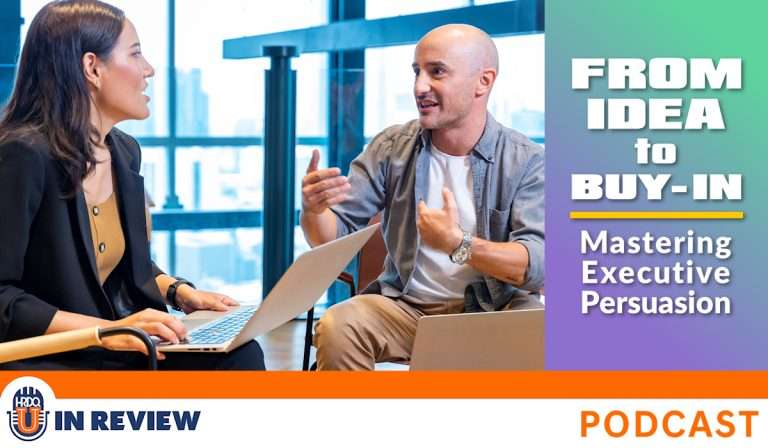
Listen to this podcast event at no charge with your
HRDQ-U Free Access Membership
Sarah sits down with Chris Wong, a therapist and organizational consultant, to unpack his webinar From Idea to Buy-In: Mastering Executive Persuasion. Chris reveals how to navigate dysfunctional organizations and master the art of persuasion to get executive buy-in.
You’ll learn the WHAC method (What is it, How does it work, Are you sure it works, Can we do it) to craft persuasive pitches, plus strategies to win over data-driven execs with strong metrics and pilot programs. Chris also shares practical storytelling tips to make your message resonate – even if storytelling isn’t your strong suit – to achieve executive buy-in.
Wrap up with actionable steps to secure real executive buy-in – and don’t miss a special discount on Chris’s course for mastering difficult conversations.
Chapters:
Action Items:
[ PODCAST PLAYBACK ]
You must be signed-in with your membership account to access this content.
Enjoyed this podcast? Have suggestions on how we can improve? Please take our quick survey and receive a coupon for 15% OFF any of our individual membership plans.
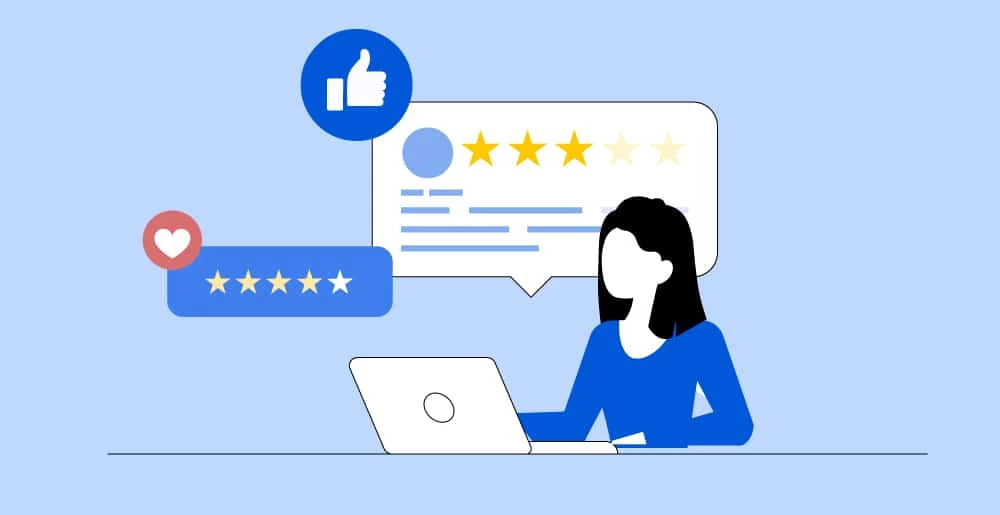
*Instant 15% coupon available upon completion of survey.
Want to learn more? Become an Individual or Corporate member to watch this and hundreds more webinars!
Master the art of executive persuasion to strengthen your negotiation skills, build influence, and drive meaningful results in your career.

Chris Wong
Chris Wong is a certified executive coach, licensed therapist, and seasoned leadership development professional. As a facilitator and public speaker, Chris has trained hundreds of leaders and spearheaded successful organizational projects. His extensive experience spans nonprofit, health insurance, and government systems.
Currently, Chris works with new purpose-driven leaders to navigate chaotic and turbulent transitions. This includes helping leaders navigate difficult conversations, resolve conflicts, create high-performing cultures, build engagement, and find success in new roles. His expertise spans diverse areas, including leadership development, strategic planning, leading change, and diversity, equity, and inclusion.
Website: myleadershippotential.com

Leadership Potential works with new purpose-driven leaders to navigate chaotic and turbulent transitions. This includes helping leaders navigate difficult conversations, resolve conflicts, create high-performing cultures, build engagement, and find success in new roles.
Training Tools for Developing Great People Skills
This event is sponsored by HRDQ. For 45 years HRDQ has provided research-based, off-the-shelf soft-skills training resources for classroom, virtual, and online training. From assessments and workshops to experiential hands-on games, HRDQ helps organizations improve performance, increase job satisfaction, and more.
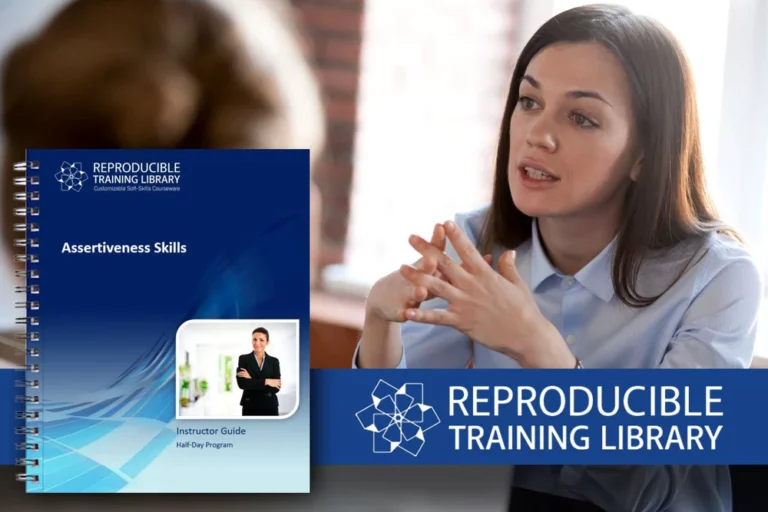
Assertiveness Skills Customizable Courseware
Assertiveness is the ability to communicate with confidence, navigate conflict, and express ideas clearly. It’s the key to communication and effective teamwork. Build the skills that lead to authentic, confident assertiveness.
Buy at HRDQstore.com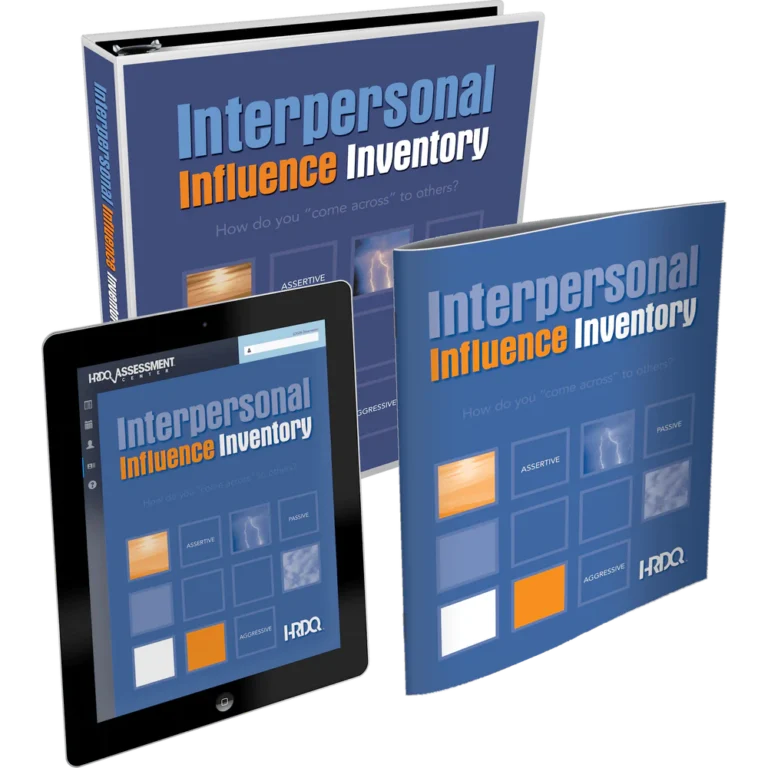
Interpersonal Influence Inventory
Influence plays a critical role in the workplace. Whether you’re resolving conflicts, building relationships, or leading a team, you’re using influence. This inventory helps individuals identify their personal influence style and strengthen it for greater impact and effectiveness.
Buy at HRDQstore.comThe HRDQ-U In Review Podcast, brought to you by HRDQU.com, brings you the latest insights and practical tools for enhancing soft-skills training in your organization. As a learning community for trainers, coaches, consultants, managers, and anyone passionate about performance improvement, we interview subject matter experts and thought leaders from recent webinars they presented with us to take a deeper dive into the content they shared and answer all your questions. Join us as we explore new ideas and industry trends, share success stories, and discuss challenges faced by professionals.
The HRDQ-U In Review Podcast is intended for HR and training professionals, organizational development practitioners, and anyone interested in improving workplace performance and productivity.
New episodes of HRDQ-U In Review are released every week.
The length of the episodes varies, but they typically range from 15-30 minutes.
The podcast covers a wide range of topics related to HR and organizational development, including leadership development, team building, communication skills, conflict resolution, employee engagement, and more.
No, HRDQ-U In Review is completely free to listen to.
You can listen to any available HRDQ-U In Review Podcast right on our website at HRDQU.com via our embedded Spotify player on the related webinar page. In addition to our self-hosted option, you can find the HRDQ-U In Review Podcast on many of the popular streaming services, which are listed above.